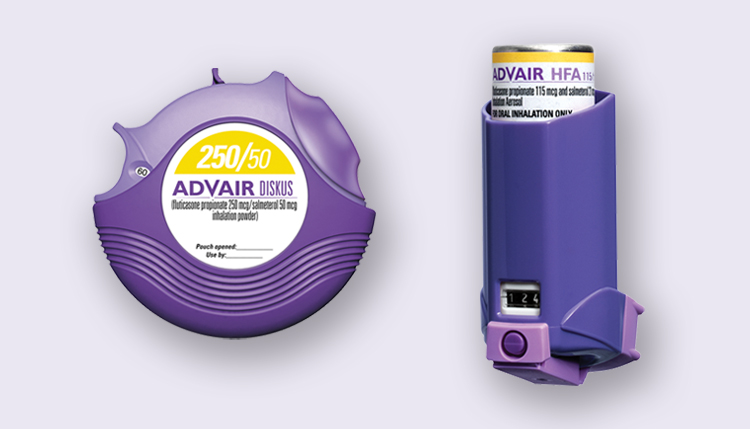Fluticasone Salmeterol: A Comprehensive Guide to its Uses, Benefits, and FAQs
Fluticasone Salmeterol is a medication commonly used for the treatment of respiratory conditions such as asthma and chronic obstructive pulmonary disease (COPD). It is important to understand the uses and benefits of Fluticasone Salmeterol to effectively manage these conditions and improve quality of life. This comprehensive guide aims to provide detailed information about Fluticasone Salmeterol, including its mechanism of action, medical conditions it treats, benefits, safety precautions, and frequently asked questions.
Understanding Fluticasone Salmeterol
Fluticasone Salmeterol is a combination medication composed of two active ingredients: fluticasone propionate, a corticosteroid, and salmeterol, a long-acting bronchodilator. It works by reducing inflammation in the airways and relaxing the muscles in the lungs, allowing for easier breathing.

Fluticasone Salmeterol is available in various forms, including inhalers and powder for inhalation. The dosage strength may vary depending on the specific product. It is crucial to follow the prescribed dosage and instructions provided by your healthcare professional to ensure optimal effectiveness and minimize the risk of side effects.
Medical Conditions Treated with Fluticasone Salmeterol
Fluticasone Salmeterol is primarily used in the management of asthma and COPD.
Asthma
Asthma is a chronic respiratory condition characterized by inflammation and narrowing of the airways, leading to symptoms such as wheezing, coughing, and shortness of breath. Fluticasone Salmeterol is commonly prescribed as a maintenance treatment for asthma to control symptoms and prevent asthma attacks.
The recommended dosage of Fluticasone Salmeterol for asthma may vary depending on the age of the patient. For adults and adolescents, the usual dose is typically 1 inhalation twice daily. For children aged 4 to 11 years, the recommended dose is usually 1 inhalation twice daily. It is important to consult with your healthcare provider for personalized dosage instructions.
While Fluticasone Salmeterol is generally well-tolerated, some potential side effects may include throat irritation, hoarseness, and oral fungal infections. It is essential to rinse the mouth with water after each use to minimize these side effects. If you experience any concerning side effects, it is important to contact your healthcare provider for further guidance.
Chronic Obstructive Pulmonary Disease (COPD)
COPD is a progressive lung disease that causes breathing difficulties and is often associated with smoking. Fluticasone Salmeterol is used in the treatment of COPD to improve lung function and reduce symptoms such as coughing, wheezing, and shortness of breath.
Fluticasone Salmeterol is often prescribed as part of a combination therapy, along with other medications such as long-acting muscarinic antagonists (LAMAs) or short-acting bronchodilators. This combination approach helps to provide better symptom control and improve overall lung function.
Long-term use of Fluticasone Salmeterol in COPD management has shown positive effects in reducing exacerbations and improving quality of life. However, it is important to regularly monitor lung function and discuss any concerns or changes in symptoms with your healthcare provider.
Other Respiratory Conditions
In addition to asthma and COPD, Fluticasone Salmeterol may be prescribed for other respiratory conditions such as allergic rhinitis and sinusitis. The dosage guidelines and precautions may vary depending on the specific condition and the individual’s medical history. It is crucial to consult with a healthcare professional for personalized advice.
Benefits and Efficacy of Fluticasone Salmeterol
Fluticasone Salmeterol offers several benefits in the management of respiratory conditions:
Improved symptom control: Fluticasone Salmeterol helps in reducing inflammation and opening up the airways, leading to better control of symptoms such as wheezing, coughing, and shortness of breath. By reducing these symptoms, Fluticasone Salmeterol allows individuals to breathe more easily and engage in daily activities without limitations.
Prevention of exacerbations: Fluticasone Salmeterol can help prevent asthma attacks and COPD exacerbations. By reducing airway inflammation and improving lung function, it minimizes the risk of sudden worsening of symptoms and the need for emergency medical intervention.
Long-term benefits: When used consistently and as prescribed, Fluticasone Salmeterol has been shown to provide long-term benefits in the management of respiratory conditions. It can help reduce the frequency and severity of symptoms, improve lung function, and enhance overall quality of life.
Efficacy compared to other medications: Fluticasone Salmeterol is considered an effective treatment option for asthma and COPD. It is often used as a first-line therapy due to its proven efficacy in controlling symptoms and reducing the risk of exacerbations. However, the choice of medication may vary depending on individual factors, and it is important to consult with a healthcare professional to determine the most suitable treatment approach.
Safety Precautions and Potential Side Effects
While Fluticasone Salmeterol is generally well-tolerated, it is important to be aware of potential side effects and take necessary precautions:
Common side effects: These may include throat irritation, hoarseness, cough, headache, and oral fungal infections. Rinsing the mouth with water after each use can help minimize these side effects.
Rare but serious side effects: Although rare, Fluticasone Salmeterol may increase the risk of severe allergic reactions, pneumonia, and paradoxical bronchospasm (worsening of breathing difficulties). It is important to be aware of the warning signs of these serious side effects and seek immediate medical attention if they occur.
Precautions for specific patient groups: Fluticasone Salmeterol should be used with caution in certain populations, such as pregnant women, children, and the elderly. It is important to discuss any existing medical conditions, allergies, or medications with a healthcare professional before starting Fluticasone Salmeterol.
Drug interactions and contraindications: Fluticasone Salmeterol may interact with certain medications, including some antifungal drugs and HIV protease inhibitors. It is important to inform your healthcare provider about all the medications you are taking to avoid potential interactions.
Frequently Asked Questions
1. What is the recommended dosage for Fluticasone Salmeterol?
The recommended dosage for Fluticasone Salmeterol may vary depending on the specific condition and the age of the patient. It is important to follow the dosage instructions provided by your healthcare professional.
2. Can Fluticasone Salmeterol be used as a rescue inhaler?
No, Fluticasone Salmeterol is not intended to be used as a rescue inhaler. It is a maintenance medication that needs to be used regularly to control symptoms and prevent exacerbations. For immediate relief of symptoms, a short-acting bronchodilator should be used as prescribed.
3. How long does it take for Fluticasone Salmeterol to show its effects?
The onset of action of Fluticasone Salmeterol may vary among individuals. In general, it may take a few days to weeks of regular use to experience the full benefits. However, individual responses may vary, and it is important to continue using the medication as prescribed.
4. Are there any dietary restrictions while using Fluticasone Salmeterol?
There are no specific dietary restrictions associated with Fluticasone Salmeterol. However, it is always important to maintain a healthy diet and follow any dietary recommendations provided by your healthcare provider.
5. Can Fluticasone Salmeterol be used in children under a certain age?
Fluticasone Salmeterol may be used in children as young as 4 years old, but the dosage and administration should be determined by a healthcare professional based on the child’s specific needs and condition.
6. What are the potential long-term effects of using Fluticasone Salmeterol?
Long-term use of Fluticasone Salmeterol in the management of respiratory conditions such as asthma and COPD has generally shown positive effects in reducing symptoms, improving lung function, and enhancing quality of life. However, as with any medication, it is important to regularly monitor your condition and discuss any concerns or changes in symptoms with your healthcare provider.
7. Is Fluticasone Salmeterol safe to use during pregnancy or breastfeeding?
It is important to consult with your healthcare provider if you are pregnant, planning to become pregnant, or breastfeeding before using Fluticasone Salmeterol. They can assess the potential risks and benefits and guide the appropriate use of the medication during these periods.
8. Are there any alternative medications to Fluticasone Salmeterol?
There are alternative medications available for the treatment of respiratory conditions such as asthma and COPD. Your healthcare provider can evaluate your specific condition and medical history to determine the most suitable treatment options for you.
9. Can Fluticasone Salmeterol be used by people with heart conditions?
Fluticasone Salmeterol should be used with caution in individuals with certain heart conditions. It is important to inform your healthcare provider about any existing heart conditions or medications you are taking to ensure the safe and appropriate use of Fluticasone Salmeterol.
10. How should Fluticasone Salmeterol be stored and handled?
Fluticasone Salmeterol should be stored at room temperature, away from moisture and heat. It is important to follow the storage instructions provided by the manufacturer. Additionally, ensure that the inhaler or device is clean and in good working condition for proper administration.
Conclusion:
Fluticasone Salmeterol is a medication that plays a crucial role in the management of respiratory conditions such as asthma and COPD. Understanding its uses, benefits, safety precautions, and potential side effects is essential for effective treatment and improved quality of life. It is important to consult with a healthcare professional for personalized advice and guidance regarding the use of Fluticasone Salmeterol. By working closely with your healthcare provider, you can ensure the best outcomes and optimal management of your respiratory condition.




